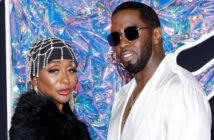Hollywood movies are under-representing blacks and other non-white ethnic groups in the US, according to a new study.
Based on the study, Race/Ethnicity in 600 Popular Films: Examining on Screen Portrayals and Behind the Camera Diversity. The study took a close look at race/ethnicity of speaking characters across 100 of the top-grossing films of 2013. Every speaking character was evaluated for demographic (i.e., age, gender, parental status, relational involvement) and hypersexualization (i.e., sexy attire, nudity, attractiveness) indicators.
Key Findings
A total of 3,932 speaking characters were evaluated for race/ethnicity. A full 74.1% were White, 14.1% Black, 4.9% Hispanic, 4.4% Asian, 1.1% Middle Eastern, less than 1% American Indian or Alaskan Native, and 1.2% were from “other” races/ethnicities.
Films without a Black director were responsible for casting Black characters in less (10.8%) of speaking parts. Black directors, conversely, cast Black characters in more (46%) of all of the speaking roles. It is interesting to note here how Star Wars filmmaker George Lucas (now married to a black lady), while filming the Red Tails (2012) movie was faced sponsorship challenges from Hollywood executives. They made is known to him that over 60 percent of their audience is in Europe and as such an all black hero movie is not that viable. He ended up financing the project almost all by himself.
Black males were the most likely to be shown in a committed relationship (68.4%). Further, White (58.1%) and Hispanic (57.1%) males were more likely than “Other” males (37.5%) to be depicted as boyfriends or spouses. Asian males were the least likely to be depicted in a romantic relationship (28.6%).
On whether each film in 2013 was directed by an African American or Black director, a total of 107 directors were attached to the 100 top-grossing films, only 7 (6.5%) were Black: Lee Daniels, The Butler; Antoine Fuqua, Olympus Has Fallen; Malcolm D. Lee, Best Man Holiday; Steve McQueen, 12 Years a Slave; Tyler Perry, A Madea Christmas, Tyler Perry, Temptation, Malcolm D. Lee, Scary Movie 5. As the list reveals, there are only 5 unique Black male directors across the 2013 sample. Finding reveals that Black female directors are essentially absent from the ranks of top-grossing directors.
Here is a List of Black Directors Working in Top-Grossing Films Between 2007-2013
| Philip G. Atwell | Albert Hughes | Olatunde Osunsanmi | Denzel Washington |
| Lee Daniels | Allen Hughes | Peter Ramsey | Damien Dante Wayans |
| Antoine Fuqua | Malcolm D. Lee | Tim Story | Sylvain White |
| F. Gary Gray | Steve McQueen | David E. Talbert | Preston A. Whitmore II |
| Sanaa Hamri | Tyler Perry | George Tillman Jr. | George C. Wolfe |
| Anthony Hemingway | Gina Prince-Bythewood | Mark Tonderai |
Although 2014 saw Steve McQueen become the first black director to win an Oscar for his film 12 years A Slave, the study found that there were only 1.1% more black characters on the big screen than in 2007.
Hispanic females seem to be more hyper-sexualized than their female counterparts from other groups. Hispanic females (37.5%) were more likely than females from all other races/ethnicities to be shown partially or fully naked on screen. Asian females, in contrast, are the least sexualized group.
Despite the changing demographics of the US population, “films still portray a homogenised picture of the world”, the report said.
The study illustrated how existing cultural stereotypes may still govern how characters from different backgrounds are shown on screen. It noted that increasing diversity in the U.S. population means that diversity is not a question for the past—it is a challenge and a hallmark of the future.




